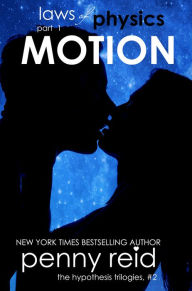eBooks for kindle for free Motion: (Law of Physics #1) 9781635763393 in English by Penny Reid
Par mckinney william le jeudi, décembre 31 2020, 23:04 - Lien permanent
Motion: (Law of Physics #1). Penny Reid

Motion-Law-of-Physics-1.pdf
ISBN: 9781635763393 | 200 pages | 5 Mb

- Motion: (Law of Physics #1)
- Penny Reid
- Page: 200
- Format: pdf, ePub, fb2, mobi
- ISBN: 9781635763393
- Publisher: EverAfter Romance
eBooks for kindle for free Motion: (Law of Physics #1) 9781635763393 in English by Penny Reid
Motion: (Law of Physics #1) by Penny Reid Coming soon from USA TODAY bestselling author, Penny Reid!
What is Newton's second law? (article) | Khan Academy
In the world of introductory physics, Newton's second law is one of the most important laws you'll learn. It's used in almost every chapter of every physics textbook, so it's important to master this law as soon as possible. We know objects can only accelerate if there are forces on the object. Newton's second law tells us exactly
Momentum and Its Conservation - The Physics Classroom
Lesson 1 - The Impulse-Momentum Change Theorem. Momentum · Momentum and Impulse Connection · Real-World Applications. Lesson 2 - The Law of Momentum Conservation. The Law of Action-Reaction (Revisited) · Momentum Conservation Principle · Isolated Systems · Using Equations as a "Recipe" for Algebraic
Investigating Newton's second law of motion - Practical Physics
The force is conveniently increased in 1 newton steps when slotted masses of 100 g are added. Place the unused slotted masses on the trolley. Transfer them to the slotted mass holder each time the accelerating force is increased. This ensures that the total mass experiencing acceleration remains constant throughout the
Kinematic Equations - The Physics Classroom
1-D Kinematics · Newton's Laws · Vectors - Motion and Forces in Two Dimensions · Momentum and Its Conservation · Work, Energy, and Power · Circular Motion and Satellite Motion · Thermal Physics · Static Electricity · Current Electricity · Waves · Sound Waves and Music · Light Waves and Color · Reflection and the Ray
1st&2nd Laws of Motion - NASA
SUBJECT: Physics TOPIC: Force and Motion DESCRIPTION: A set of mathematics problems dealing with Newton's Laws of Motion. CONTRIBUTED BY: Carol Some sample problems that illustrates the first and second laws ofmotion are shown below: Example 1. If the speed of sound on a particular day is 343 m/s, and
Newton's First Law - AP Physics 1 - Varsity Tutors
Example Question #1 : Newton's First Law. What net force is required to keep a 500 kg object moving with a constant velocity of ? Possible Answers: Not enough information. Correct answer: Explanation: Newton's first law states that an object in motion tends to stay in motion unless if acted upon by a net force. This means
Newton's Laws of Motion - 1. Force and Inertia - ISTP - NASA
generous to others, bestowing his attention not just on physics and mathematics, but also on religion and alchemy. The one thing about which everyone agrees is his brilliant talent. Three problems intrigued scientists in Newton's time: the laws of motion, the laws of planetary orbits, and the mathematics of
Newton's Third Law - AP Physics 1 - Varsity Tutors
Free practice questions for AP Physics 1 - Newton's Third Law. Includes full solutions and score reporting. 589 N. This means his mass is. He accelerates at , which means he was pushed by a force of. By Newton's third law of motion, Dave must also have pushed of the ground with a force of 240 Newtons. Report an Error
Physics | Science | Khan Academy
Learn about the basic principles that govern the physical world around us. Solid understanding of algebra and a basic understanding of trigonometry necessary.
Newton's First Law of Motion: Examples of the Effect of Force on
This lesson describes Newton's first law of motion, also known as the law of inertia. The interaction between force and Newton's First Law: Physics Lab. Overview of Newton's Second . the clay to change its shape. In this lesson, we will explore the relationship between force and motion as explained by Newton'slaws.
Motion (physics) - Wikipedia
In physics, motion is a change in position of an object over time. Motion is described in terms of displacement, distance, velocity, acceleration, time and speed. Motion of a body is observed by attaching a frame of reference to an observer and measuring the change in position of the body relative to that frame. If the position
Force - Wikipedia
In physics, a force is any interaction that, when unopposed, will change themotion of an object. A force can cause an object with mass to change its velocity i.e., to accelerate. Force can also be described intuitively as a push or a pull. A force has both magnitude and direction, making it a vector quantity. It is measured in the
Dynamics (mechanics) - Wikipedia
In addition, Newton established the fundamental physical laws which govern dynamics in physics. By studying his system of mechanics, dynamics can be understood. In particular, dynamics is mostly related to Newton's second law ofmotion. However, all three laws of motion are taken into account because these are